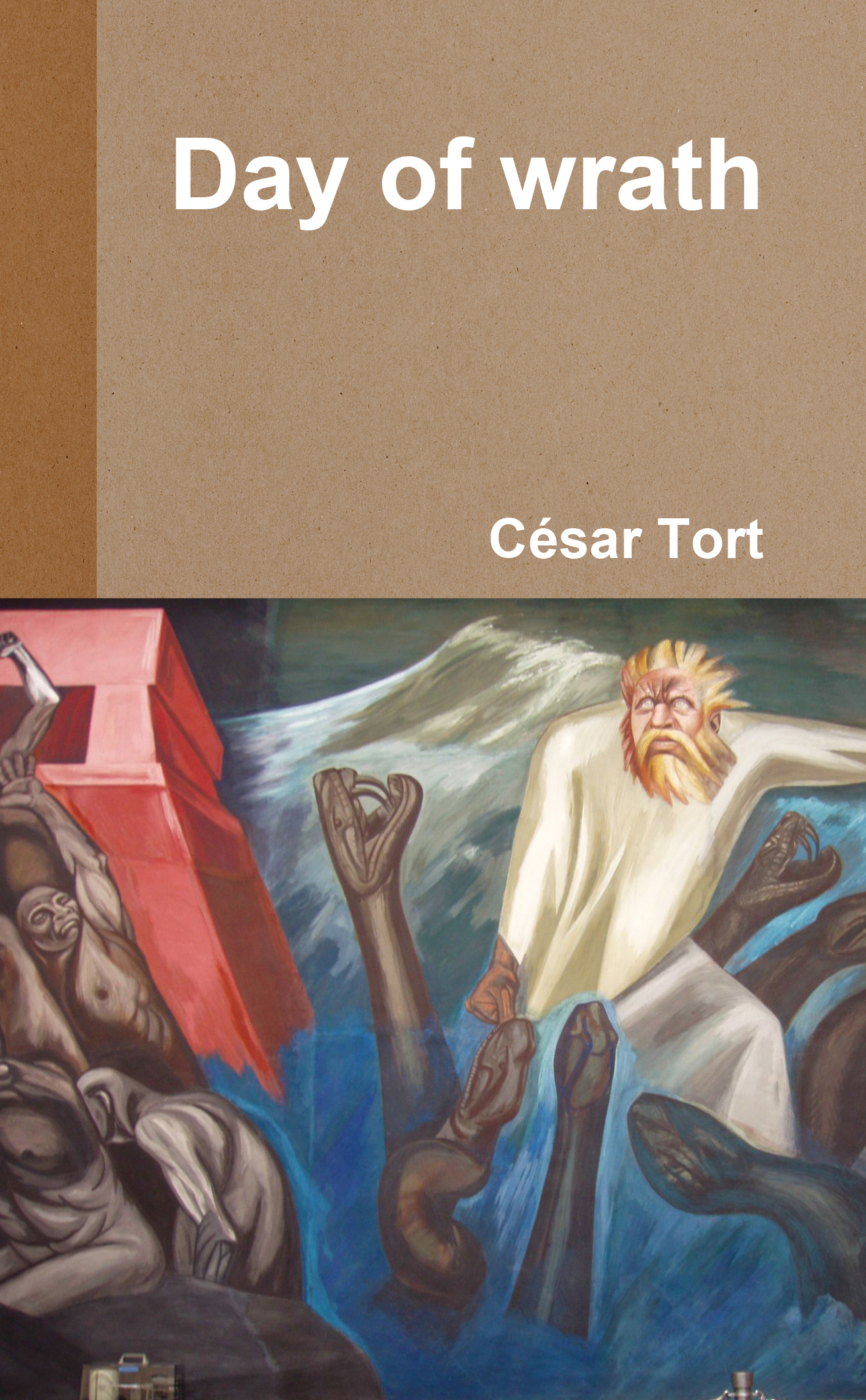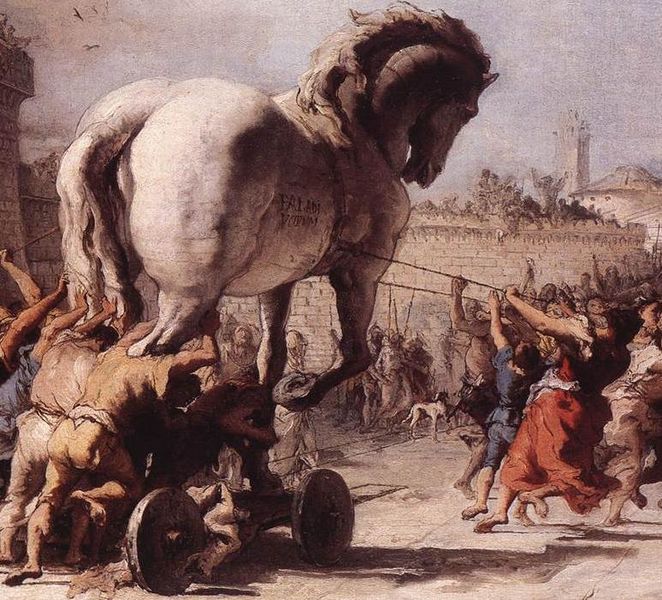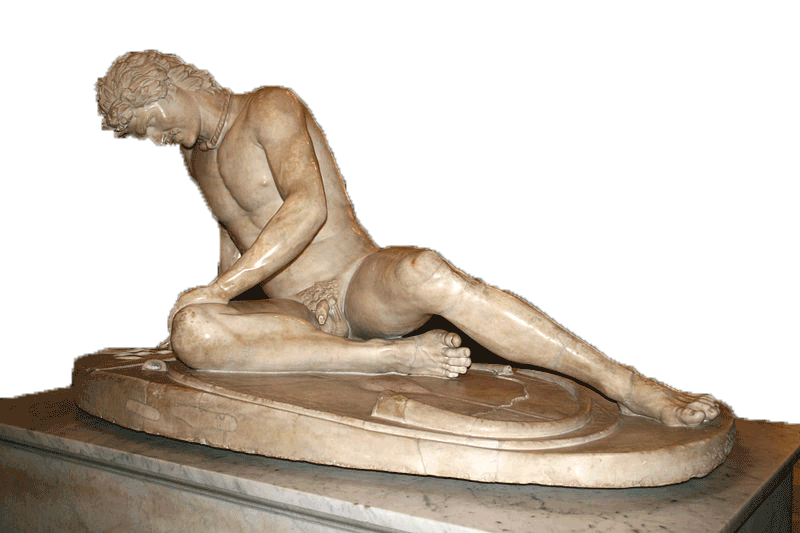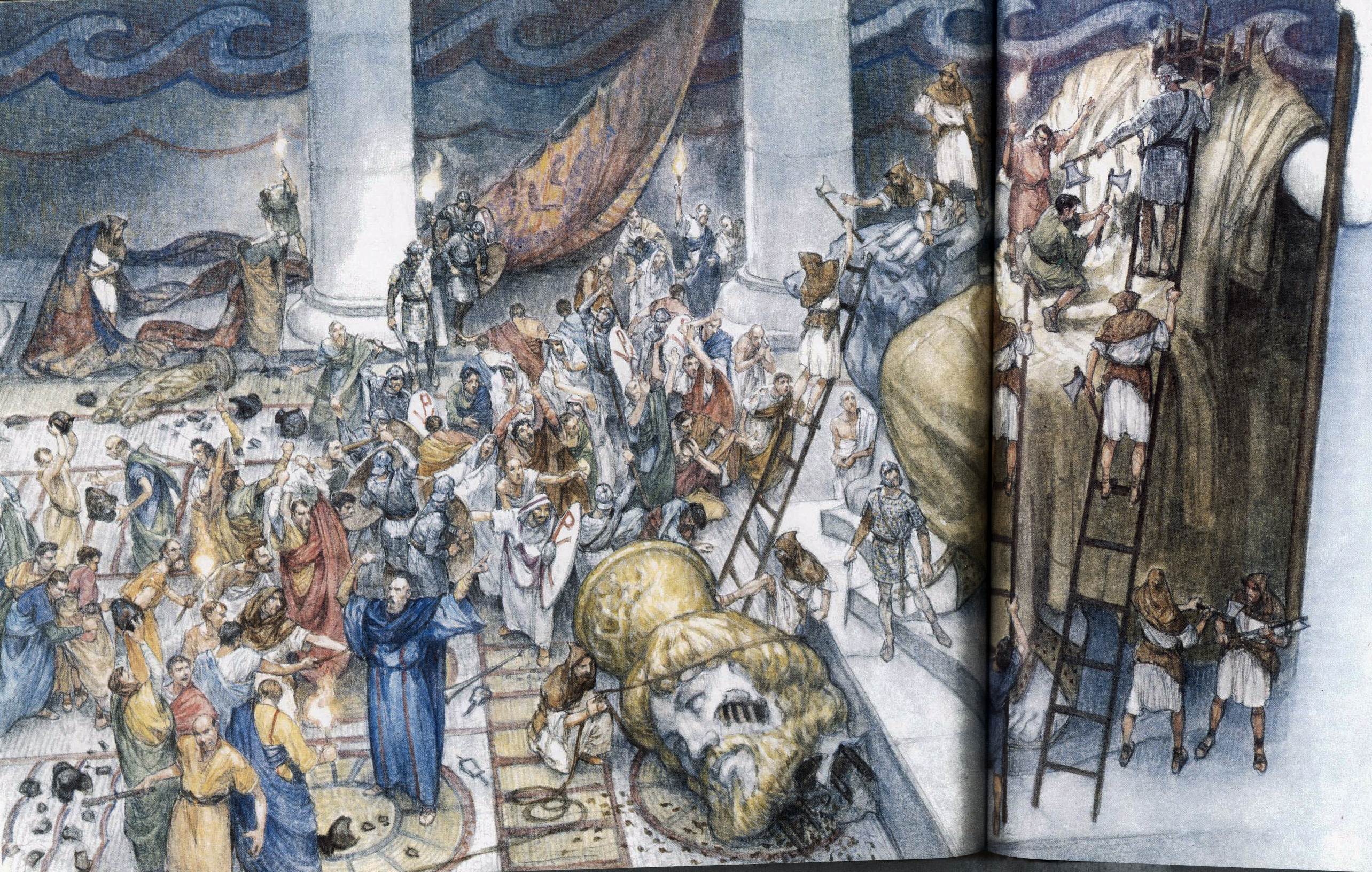The infanticidal psychoclass: references
Wikipedia has the problem that many of its editors and administrators are either white traitors to the West or Jews like those of deMause’s journal. Although some scholars contribute to editing it, there is always an anti-westerner who censures the passages opposing the anti-white zeitgeist. For example, regarding the articles on infanticide I edited in 2008, a couple of Australian administrators from the English Wikipedia abused their powers. Not only did they eliminate most of the section on Australia within the article “Infanticide.” They went so far as to erase, from that online encyclopedia, an entire article that another editor had started. This last article focused on expanding the subject of the infanticide committed by aboriginal Australians. (Part of what was censored by Wikipedia is covered in this chapter, in the section on Australia.) Almost a decade later I learned that, since the 1970s, it has been a common practice in that continent to censor studies on infanticide, insofar as the aborigines have been idealized. Rewriting the history of the natives by vaporizing, in Stalin’s style, part of the collective memory of a nation misinforms visitors to the encyclopedia. But not all Wikipedia editors have behaved like that pair of administrators, so zealous in idealizing the natives in their country. In the archived Wikipedia talk page of Psychohistory, Loren Cobb said:
In my view, the psychohistory of Lloyd deMause is indeed a notable approach to history, in the sense in which Wikipedia uses the term “notability.” I am not personally involved in psychohistory—I am a mathematical sociologist—but here are some thoughts for your consideration.
Psychohistory as put forth by deMause and his many followers attempts to explain the pattern of changes in the incidence of child abuse in history. This is a perfectly respectable and non-fringe domain of scientific research. They argue that the incidence was much higher in the past, and that there has been an irregular history of improvement. This is a hypothesis that could just as easily have been framed by an epidemiologist as a psychologist. DeMause proposes a theory that society has gone through a series of stages in its treatment and discipline of children.
Again, this is well within the bounds of social science. None of these questions are pseudoscientific. Even the Centers for Disease Control in Atlanta, a bastion of scientific epidemiology, is interested in these kinds of hypotheses.1
I exchanged a few e-mails with Cobb, who like me is very critical of the psychoanalytic tail in deMausean legacy, and his position piqued my interest.
This chapter summarizes the data collected in the first exhaustive study on infanticide: a book by Larry Milner, Hardness of Heart, published in the last year of the 20th century. That so many researchers have produced astronomical figures on the extent of infanticide moves me to think that Milner’s initiative to devote ten years of his life researching the topic should be undertaken by others. Only then can we be sure if such large numbers are accurate.
Joseph Birdsell believes in infanticide rates of 15-50 percent of the total number of births in prehistoric times.2 Laila Williamson estimated a lower rate ranging from 15-20 percent.3 Both believe that high rates of infanticide persisted until the development of agriculture.4 Some comparative anthropologists have estimated that 50 percent of female newborn babies were killed by their parents in the Paleolithic.5 These figures appear over and over in the research of other scholars.
Paleolithic and Neolithic
Decapitated skeletons of hominid children have been found with evidence of cannibalism. Neanderthal man performed ritual sacrifices of children. As shown in the bas-reliefs of a Laussel cave, a menstruating goddess is appeased only by the sacrifice of infants.6
Marvin Harris, the creator of the anthropological movement called cultural materialism, estimated that in the Stone Age up to 23-50 percent of newborns were put to death. However, Harris conceived a rational explanation. In his book Cannibals and Kings: Origins of Cultures, published in 1977, he says that the goal was to preserve the population growth to 0.001 percent. This explanation of more “civilized” cavemen than us has not been taken seriously among other scholars. But the renowned geneticist James Neel surpasses him. Through a retroactive model to study the customs of contemporary Yanomami Indians he estimated that in prehistoric times the infanticidal rate was 15-20 percent. However, Neel wrote: “I find it increasingly difficult to see in the recent reproductive history of the civilized world a greater respect for the quality of human existence than was manifested by our remote ‘primitive’ ancestors.” Ark would have scoffed at this claim. The fact that Neel published such praise for the infanticidal cavemen in Science,7 one of the most prestigious scientific journals, shows the levels of psychogenic regression that we suffer in our times.
Ancient World
As we have seen, the sacrifice of children was much more common in the Ancient World than in present times. Three thousand bones of young children, with evidence of sacrificial rituals, have been found in Sardinia. Infants were offered to the Babylonian goddess Ishtar. Pelasgians offered a sacrifice of every tenth child during difficult times. Syrians sacrificed children to Jupiter and Juno. Many remains of children have been found in Gezer excavations with signs of sacrifice. Child skeletons with the marks of sacrifice have been found also in Egypt dating 950-720 B.C. In Carthage “[child] sacrifice in the ancient world reached its infamous zenith.”8 Besides the Carthaginians, other Phoenicians, and the Canaanites, Moabites and Sepharvites offered their first-born as a sacrifice to their gods.
Carthage. Charred bones of thousands of infants have been found in Carthaginian archaeological sites in modern times. One such area harbored as many as 20,000 burial urns. It is estimated that child sacrifice was practiced for centuries in the region. Plutarch (ca. 46-120 AD) mentions the practice, as do Tertullian, Orosius, Diodorus Siculus and Philo. The Hebrew Bible also mentions what appears to be child sacrifice practiced at a place called the Tophet (from the Hebrew taph or toph, to burn) by the Canaanites, ancestors of the Carthaginians, and by some Israelites. Writing in the 3rd century B.C., Kleitarchos, one of the historians of Alexander the Great, described that the infants rolled into the flaming pit. Diodorus Siculus wrote that babies were roasted to death inside the burning pit of the god Baal Hamon, a bronze statue.9
Greece and Rome. In the Persian mythology of Zoroastrianism, at birth some children are devoured by their parents: a fable reminiscent of Cronus. Rhea hid Zeus and presented a stone wrapped in strips, which Cronus took as a swaddled baby and ate it. Cronus represents the archaic Hellas.
The historical Greeks considered barbarous the practice of adult and child sacrifice.10 It is interesting to note how conquerors like Alexander are diminished under the new psychohistorical perspective. If we give credence to the assertion that Thebes, the largest city in the region of Boeotia, had lower rates of exposure than other Greek cities, its destruction by Alexander was a fatal blow to the advanced psychoclass in Greece. A few centuries later, between 150 and 50 B.C. an Alexandrian Jew wrote Wisdom of Solomon, which contains a diatribe against the Canaanites whom he calls perpetrators of “ruthless murders of their children.” (Note how the biblical classics, the 16th-century chroniclers, and the 19th-century anthropologists wield value judgments, something banned in an academy under the shadow of Franz Boas.)
In The Histories Polybius was already complaining in the 2nd century B.C. that parents severely inhibited reproduction, and by the 1st century there were several thinkers who spoke out against the exposure of babies. Epictetus wondered “A sheep does not abandon its own offspring, nor a wolf; and yet does a man abandon his?” In the Preface we saw that in the same century Philo was the first philosopher to speak out against exposure.11
“The greatest respect is owed to a child,” wrote Juvenal, born in 55 AD. His contemporary Josephus, a Romanized Jew, also condemned exposure. And in Heroides, an elegiac poem that he wrote before his exile, Ovid asked, “What did the child commit, in so few hours of life?” However, two centuries after Augustus, in times of Constantine Rome struggled with a decreased population due to exposure. The legend of Romulus and Remus is also revealing: two brothers had been exposed to die but a she-wolf saved them. Romulus forced the Romans to bring up all males and the first female and forbade killing them after a certain age. As Rhea saving his son Zeus, this legend portrays the psychogenic landmark of classical culture compared with other cultures of the Ancient World. But even so, exposure was practiced. A letter from a Roman citizen to his wife, dating from 1 B.C., demonstrates the casual nature with which infanticide was often viewed:
Know that I am still in Alexandria. […] I ask and beg you to take good care of our baby son, and as soon as I received payment I shall send it up to you. If you are delivered, if it is a boy, keep it, if a girl, discard it.12
In some periods of Roman history it was traditional for a newborn to be brought to the pater familias, the family patriarch, who would then decide whether the child was to be kept and raised, or left to death by exposure. The Twelve Tablets of Roman law obliged him to put to death a child that was visibly deformed. Infanticide became a capital offense in Roman law in 374 AD but offenders were rarely if ever prosecuted.13
Hebrew people. Although the Bible says many Hebrews sacrificed their children to pagan gods, Judaism prohibits infanticide (I will approach the subject of the recent studies on the Israelites in the last chapter). Tacitus recorded that the Jews “regard it as a crime to kill any late-born children.”14 Josephus, whose works give an important insight into first-century Judaism, wrote that God “forbids women to cause abortion of what is begotten, or to destroy it afterward.”15
Pagan European tribes. John Boswell believed that in ancient Germanic tribes unwanted children were exposed, usually in the forest. “It was the custom of the pagans that if they wanted to kill a son or daughter, they would be killed before they had been given any food.”16 In the most influential archeological book of the 19th century, Prehistoric Times, John Lubbock invented the terms Paleolithic and Neolithic. He described that burnt bones indicated the practice of child sacrifice in pagan Britain.17
The Christian Era
Something goes completely unnoticed for the modern mind. In a world plagued by sacrifices like the Old World, the innocent son has to die ordered by his father: a well-known practice. It is impossible to understand the psychoclass that gave rise to Christianity by overlooking this reality converted into a powerful symbol. This is true despite, as I have stated in the previous pages, that forms of upbringing should have suffered, in general terms, a regression throughout the Middle Ages. The Teachings of the Apostles or Didache said: “You shall not murder a child by abortion nor kill that which is born.”18 The Epistle of Barnabas stated an identical command.19 So widely accepted was this teaching in Christendom that apologists Tertullian, Athenagoras, Minucius Felix, Justin Martyr and Lactantius also maintained that exposing a baby to death was a wicked act. In 318 AD Constantine considered infanticide a crime but reinstated the practice of selling one’s own children. The West took its time to consider criminal the late forms of infanticide. The author of the Codex Theodosianus complained in 322 AD:
We have learned that in provinces where there are shortages of food and lack of livelihood, parents are selling or pledging their children. Such an ignominious act is repugnant to our customs.
Towards 340 AD Lactantius argued that strangling newborns was sinful. Already within the historical period known as Christendom, infanticide was not officially banned in Roman criminal law until 374 AD when Valentinian I mandated to rear all children (exposing babies, especially girls, was still common). However, both exposure and child abandonment continued in Europe.
Middle Ages. The practice was so entrenched, as well as the sale of children, that it had been futile to decree the abolition of such customs. Until 500 AD it could not be said that a baby’s life was secure. The Council of Constantinople declared that infanticide was a homicide, and in 589 AD the Third Council of Toledo took measures against the Spanish custom of killing their own children.20 Whereas theologians and clerics preached to spare their lives, newborn abandonment continued as registered in both the literature record and in legal documents.21 More archaic forms of infanticide, such as sacrifice, were practiced by the Gauls, Celts and the Irish. “They would kill their piteous wretched offspring with much wailing and peril, to pour their blood around Crom Cruaich,” a deity of pre-Christian Ireland.22 Unlike other European regions, in the Middle Ages the German mother had the right to expose the newborn.23 In Gotland, Sweden, children were also sacrificed.24 According to William Langer, exposure in the Middle Ages “was practiced on a gigantic scale with absolute impunity, noticed by writers with most frigid indifference.”25 By the end of the 12th century, notes Richard Trexler, Roman women threw their newborns into the Tiber River even in daylight.26 In Russia, peasants sacrificed their sons and daughters to the pagan god Perun. Some residents of rural areas got rid of their babies by throwing them to the hogs. In Medieval Russia secular laws did not deal with what, for the church, was a crime.27 The Svans killed the newborn females by filling their mouths with hot ashes. In Kamchatka, babies were killed and thrown to wild dogs.28
The darkness of Europe would begin to fade in the 12th century. As explained above, the “little Renaissance” of that century reminds me the famous series of Kenneth Clark, the first of its kind that showed us the personal view of an intellectual in a television series. Other cultures would be arrested in their ways of treatment of women and children.
China and Japan. The American explorer George Kennan noted that among the Koryaks, a Mongoloid people of north-eastern Siberia, infanticide was still common in the 19th century. One of the twins was always sacrificed.29 Since the 17th century Jesuit missionaries had found thousands of babies, mostly women, abandoned on the streets of China. Marco Polo, the famed explorer, saw newborns exposed in Manzi.30 China’s society promoted gendercide. The philosopher Han Fei Tzu, a member of the ruling aristocracy of the 3rd century B.C., who developed a school of law, wrote: “As to children, a father and mother when they produce a boy congratulate one another, but when they produce a girl they put it to death.”31 Among the Hakka people, and in Yunnan, Anhwei, Szechwan, Jiangxi and Fukien a method of killing the baby was to put her into a bucket of cold water, which was called “baby water.” 32 Even before feudal Japan infanticide was performed. The common slang for infanticide was mabiki which means to pull plants from an overcrowded garden. It has been estimated that 40 percent of newborn babies were killed in Kyushu.33 A typical method in Japan was smothering through wet paper on the baby’s mouth and nose.34 Mabiki persisted in the 19th and early 20th centuries.35
India and Pakistan. Female infanticide of newborn girls was systematic in feudatory Rajputs in India. According to Firishta (approx. 1560-1620), as soon as a female child was born she was holding “in one hand, and a knife in the other, that any person who wanted a wife might take her now, otherwise she was immediately put to death.”36 The practice of female infanticide was also common among the inhabitants of Kutch, Kehtri, Nagar, Gujarat, Miazed, Kalowries and also among the Sind in Pakistan.37 It was not uncommon that parents threw a child to the crocodiles in the Ganges River as a sacrificial offering. The British colonists were unable to outlaw the custom until the beginnings of the 19th century.38
Arabia and Islam. Female infanticide was common all over Arabia during pre-Islamic Arabia, especially by burying alive the newborn female.39 Later it would be explicitly prohibited by the Koran: “And do not kill your children for fear of poverty; We give them sustenance and yourselves too; Surely to kill them is a great wrong.”40 However, in spite of this emergent psychoclass, if compared with their infanticidal neighbors of the Arabian peninsula, the forms of childcare and the treatment of women in Islam would be stagnant for centuries.
Tribes
Infanticide in tribal societies was, and in some tribes still is, more frequent than infanticide in both Western and Eastern civilizations.
Africa. In this continent newborns were killed because of fear that they were an evil omen or because they were considered unlucky. Twins were usually put to death in Arebo; as well as by the Nama Hottentots of South West Africa; in the Lake Victoria Nyanza region; by the Tswana in Portuguese East Africa; among the Ilso and Ibo people of Nigeria; and by the !Kung Bushmen of the Kalahari Desert.41 The Kikuyu, Kenya’s most populous ethnic group, practiced ritual killing of twins.42 Lucien Lévy-Brühl noted that, as a result of fearing a drought, if a baby was born feet first in British East Africa, she or he was smothered.43 The Tswana people did the same since they feared the newborn would bring ill fortune to the parents.44 Similarly, William Sumner noted that the Vadshagga killed children whose upper incisors came first.45 If a mother died in childbirth among the Ibo people of Nigeria, the newborn was buried alive. It suffered a similar fate if the father died.46 In The Child in Primitive Society, Nathan Miller wrote in the 1920s that among the Kuni tribe every mother had killed at least one of her children.47 Child sacrifice was practiced as late as 1929 in Zimbabwe, where a daughter of the tribal chief used to be sacrificed as a petition of rain.48
Oceania and the Pacific Islands. Infanticide among the autochthon people in the Oceania islands is widespread. In some areas of the Fiji islands up to 50 percent of newborn infants were killed.49 In the 19th-century Ugi, in the Solomon Islands almost 75 percent of the indigenous children had been brought from adjoining tribes due to the high incidence rate of infanticide, a unique feature of these tribal societies.50 In another Solomon island, San Cristóbal, the firstborn was considered ahubweu and often buried alive.51 As a rationale for their behavior, some parents in British New Guinea complained: “Girls […] don’t become warriors, and they don’t stay to look for us in our old age.”52
Australia. According to Bronislaw Malinowski, who wrote a book on indigenous Australians in the early 1960s, “infanticide is practiced among all Australian natives.”53 The practice has been reported in Tasmania, Western Australia, Central Australia, South Australia, in the Northern Territory, Queensland, New South Wales and Victoria. Anthropologist Géza Róheim wrote:
When the Yumu, Pindupi, Ngali, or Nambutji were hungry, they ate small children with neither ceremonial nor animistic motives. Among the southern tribes, the Matuntara, Mularatara, or Pitjentara, every second child was eaten in the belief that the strength of the first child would be doubled by such a procedure.54
Family units usually consisted of three children. Brough Smyth, a 19th century researcher, estimated that in Victoria about 30 percent of the births resulted in infanticide.55 Mildred Dickeman concurs that the figure is accurate in other Australia tribes as a result of a surplus of the birthrate.56 Cannibalism was observed in Victoria at the beginning of the 20th century. The Wotjo tribe, as well as the tribes of the lower Murray River, sometimes killed a newborn to feed an older sibling.57 Thomas Robert Malthus said that, in the New South Wales region when the mother died sucking infants were buried alive with her.58 In the Darling River region, infanticide was practiced “by a blow on the back of the head, by strangling with a rope, or chocking with sand.”59 In Queensland a tribal woman only could have children after the age of thirty. Otherwise babies would be killed.60 The Australian Aranda tribes in the Northern Territory used the method of choking the newborn with coal, sand or kill her with a stick.61 According to James George Frazer, in the Beltana tribes in South Australia it was customary to kill the first-born.62 Twins were always killed by the Arrernte in central Australia.63 In the Luritcha tribe occasional cannibalism of young children occurred.64 Aram Yengoyan calculated that, in Western Australia, the Pitjandjara people killed 19 percent of their newborns.65 In the 19th century the native Tasmanians were exterminated by the colonists, who regarded them as a degenerate race. Richard H. Davies (fl. 1830s-1887), a brother of Archdeacon Davies, wrote that Tasmanian “females have been known to desert their infants for the sake of suckling the puppies,” which were later used for hunting.66 Like other tribal Australians, when the mother died the child was buried as well.67
Polynesia. In ancient Polynesian societies infanticide was fairly common.68 Families were supposed to rear no more than two children. Writing about the natives Raymond Firth noted: “If another child is born, it is buried in the earth and covered with stones.”69 In Hawaii infanticide was a socially sanctioned practice before the Christian missions.70 Infanticidal methods included strangling the children or, more frequently, burying them alive.71 Infanticide was quite intense in Tahiti.72 Methods included suffocation, neck breaking and strangulation.73
North America. Infanticide and child sacrifice was practiced in the New World at times when in Western Europe it had been largely abandoned. There is no agreement about the actual estimates of the frequency of newborn female infanticide in the Eskimo population. Carmel Schrire mentions diverse studies ranging from 15-50 percent to 80 percent.74 Polar Eskimos killed the child by throwing him or her into the sea.75 There is even a legend in Eskimo folklore, “The Unwanted Child,” where a mother throws her child into the fjord. The Yukon and the Mahlemuit tribes of Alaska exposed the female newborns by stuffing their mouths with grass before leaving them to die.76 In Arctic Canada the Eskimos exposed their babies on the ice and left them to die.77 Female Eskimo infanticide disappeared in the 1930s and 1940s after contact with the Western cultures of the South.78 The Handbook of North American Indians reports infanticide and cannibalism among the Dene Indians and those of the Mackenzie Mountains.79 In the Eastern Shoshone there was a scarcity of Indian women as a result of female infanticide.80 For the Maidu Native Americans in the United States twins were so dangerous that they not only killed them, but the mother as well.81 In the region known today as southern Texas, the Mariame Indians practiced infanticide of females on a large scale. Wives had to be obtained from neighboring groups.82
South American tribes. Although data of infanticides among the indigenous people in South America is not as abundant as data from North America, the estimates seem to be similar. The Tapirapé indigenous people of Brazil allowed no more than three children per woman, and no more than two had to be of the same sex. If the rule was broken infanticide was practiced.83 The people in the Bororo tribe killed all the newborns that did not appear healthy enough. Infanticide is also documented in the case of the Korubo people in the Amazon.84
While Capacocha sacrifice was practiced in the Peruvian large cities, child sacrifice in the pre-Columbian tribes of the region is less documented. However, even today studies on the Aymara Indians reveal high incidences of mortality among the newborn, especially female deaths, suggesting infanticide.85 Infanticide among the Chaco in Paraguay was estimated as high as 50 percent of all newborns in that tribe, who were usually buried.86 The infanticidal custom had such roots among the Ayoreo in Bolivia and Paraguay that it persisted until the late 20th century.87
Conclusion
As can be gathered from the above data, it is possible to support psychohistory’s cornerstone, the idea of an infanticidal psychoclass, with sources other than those used by deMause. The main criticism of historian Julie Hofmann Kemp to the deMausean model has, therefore, been solved.
References
1 Loren Cobb signs under a penname in Wikipedia. His post appeared in the talk page of Psychohistory (03:41, April 3, 2008).
2 Birdsell, Joseph, B. (1986), “Some predictions for the Pleistocene based on equilibrium systems among recent hunter-gatherers,” in Richard Lee and Irven DeVore, Man the Hunter, Aldine Publishing Co., p. 239.
3 Williamson, Laila (1978), “Infanticide: an anthropological analysis,” in Kohl, Marvin, Infanticide and the Value of Life, New York: Prometheus Books, pp. 61-75.
4 Milner, Larry S. (2000). Hardness of Heart / Hardness of Life: The Stain of Human Infanticide. Lanham/New York/Oxford: University Press of America, p. 19.
5 Hoffer, Peter, N.E.H. Hull (1981). Murdering Mothers: Infanticide in England and America, 1558-1803. New York University Press, p. 3.
6 Simons, E. L. (1989). “Human origins.” Science, 245: p. 1344.
7 Neel, James. (1970). “Lessons from a ‘primitive’ people.” Science, 1: p. 816.
8 Milner: Hardness of Heart (op. cit.) p. 324.
9 Brown, Shelby (1991). Late Carthaginian Child Sacrifice and Sacrificial Monuments in their Mediterranean Context. Sheffield Academic Press, pp. 22s. See also: Stager, Lawrence, Samuel R. Wolff (1984). “Child sacrifice at Carthage—religious rite or population control?” Biblical Archaeology Review 10: pp. 31-51.
10 Hughes, Dennis D. (1991). Human Sacrifice in Ancient Greece. Routledge, p. 187.
11 Philo (1950). The Special Laws. Harvard University Press, Vol. VII, pp. 117s, 551, 549.
12 Naphtali, Lewis, ed. (1985), “Papyrus Oxyrhynchus 744,” Life in Egypt Under Roman Rule, Oxford University Press, p. 54.
13 Radville, Samuel X. (1974), “A history of child abuse and infanticide,” in Steinmetz, Suzanne K. and Murray A. Strauss, Violence in the Family, New York: Dodd, Mead & Co., pp. 173-179.
14 Tacitus (1931). The Histories. London: William Heinemann, Vol. II, p. 183.
15 Josephus (1976). The Works of Flavius Josephus, “Against Apion.” Cambridge: Harvard University Press, II.25, p. 597.
16 John Boswell (1988). The Kindness of Strangers. New York: Vintage Books, p. 211.
17 Lubbock, John (1865). Pre-historic Times, as Illustrated by Ancient Remains, and the Manners and Customs of Modern Savages. London: Williams and Norgate, p. 176.
18 Robinson, J. Armitage (translator) (1920), “Didache,” Barnabas, Hermar and the Didache, Vol. D.ii.2c, New York: The MacMillan Co., p. 112.
19 Ibid., Epistle of Barnabas, xix. 5d.
20 Radbill, Samuel X. (1974), “A history of child abuse and infanticide,” in Steinmetz, Suzanne K. and Murray A. Straus, Violence in the Family, New York: Dodd, Mead & Co., pp. 173-179.
21 John Boswell (1984). “Exposition and oblation: the abandonment of children and the ancient and medieval family.” American Historical Review 89: pp. 10-33.
22 Dorson, Richard (1968). Peasant Customs and Savage Myths: Selections from the British Folklorists. University of Chicago Press, p. 351.
23 Westrup, C.W. (1944). Introduction to Roman Law. Oxford University Press, p. 249.
24 Turville-Petre, Gabriel (1964). Myth and Religion of the North: The Religion of Ancient Scandinavia. New York: Holt, Rinehart & Winston, p. 253.
25 Langer, William L. (1974). “Infanticide: a historical survey.” History of Childhood Quarterly, 1, pp. 353-366.
26 Trexler, Richard (1973). “Infanticide in Florence: new sources and first results.” History of Childhood Quarterly, 1: p. 99.
27 Ransel, David (1988). Mothers of Misery. Princeton University Press, pp. 10-12.
28 McLennan: Studies in Ancient History (op. cit.), pp. 105s.
29 Kennan, George (1986 [originally published in 1871]). Tent Life in Siberia. New York: Gibbs Smith.
30 Polo, Marco (1965). The Travels. Middlesex: Penguin Books, p. 174.
31 Yu-Lan, Fung (1952). A History of Chinese Philosophy. Princeton University Press, p. 327.
32 Yao, Esther S. Lee (1983). Chinese Women: Past and Present. Mesquite: Ide House, p. 75.
33 Kushe, Helga and Peter Singer (1985). Should the Baby Live? Oxford University Press, p. 106.
34 Shiono, Hiroshi and Atoyo Maya, Noriko Tabata, Masataka Fujiwara, Junich Azumi and Mashahiko Morita (1986). “Medico-legal aspects of infanticide in Hokkaido District, Japan.” American Journal of Forensic Medicine and Pathology, 7: p. 104.
35 Vaux, Kenneth (1989). Birth Ethics. New York: Crossroad, p. 12.
36 Westermarck, Edward (1968). A Short History of Marriage. New York: Humanities Press, Vol. III, p. 162.
37 Panigrahi, Lalita (1972). British Social Policy and Female Infanticide in India. New Delhi: Munshiram Manoharlal, p. 18.
38 Davies, Nigel (1981). Human Sacrifice. New York: William Morrow & Co, p. 18.
39 Milner: Hardness of Heart, (op. cit.), p. 59. See also: Smith, William Robertson (1903). Kinship and Marriage in Early Arabia. London: Adam & Charles Block, p. 293.
40 The Koran, XVII:31. See also LXXXI:8-9, XVI:60-62, XVII:42 and XLII:48.
41 Milner: Hardness of Heart (op. cit.) pp. 160s.
42 LeVine, Sarah and Robert LeVine (1981), “Child abuse and neglect in Sub-Saharan Africa,” in Korbin, Jill, Child Abuse and Neglect, Berkeley: University of California Press, p. 39.
43 Lévy-Brühl, Lucien (1923). Primitive Mentality. London: George Allen & Unwin Ltd., p. 150.
44 Schapera, I.A. (1955). A Handbook of Tswana Law and Custom. Oxford University Press, p. 261.
45 Sumner, William (1956 [originally published in 1906). Folkways: A Study of the Sociological Importance of Usages, Manners, Customs, Mores, and Morals. Oxford University Press, p. 274.
46 Basden, G.T. (1996). Niger Ibos. New York: Barnes & Noble, pp. 180-184, 262s.
47 Miller, Nathan (1928). The Child in Primitive Society. New York: Bretano’s, p. 37.
48 Davies: Human Sacrifice (op. cit.), p. 143.
49 McLennan, J.F. (1886). Studies in Ancient History, The Second Series. New York: MacMillan & Co., Ltd., pp. 90s.
50 Guppy, H.B. (1887). The Solomon Islands and Their Natives. London: Swan Sonnenschein, p. 42.
51 Frazer, J.G. (1935). The Golden Bough. New York: MacMillan Co., pp. 332s.
52 Langness, L.L. (1984), “Child abuse and cultural values: the case of New Guinea,” in Korbin, Jill, Child Abuse and Neglect: Cross-Cultural Perspectives, Berkeley: University of California Press, p. 15.
53 Malinowski, Bronislaw (1963). The Family Among the Australian Aborigines. New York: Scocken Books, p. 235.
54 Róheim, Géza (1962). “The Western tribes of Central Australia: childhood.” The Psychoanalytic Study of Society, 2: p. 200.
55 Smyth, Brough (1878). The Aborigines of Australia. London: John Ferres, p. 52.
56 Dickeman, Mildred (1975). “Demographic consequences of infanticide in man.” Annual Review of Ecology and Systematics, 6: p. 121.
57 Howitt, A.W. (1904). The Native Tribes of South-East Australia. MacMillan & Co., Ltd., pp. 749s.
58 Malthus, Thomas Robert (1963). On Population. New York: The Modern Library, I.III, p. 170.
59 Bonney, Frederic (1884). “On some customs of the aborigines of the River Darling.” Journal of the Royal Anthropological Institute of Great Britain and Ireland, 13: p. 125.
60 Cowlishaw, Gillian (1978). “Infanticide in aboriginal Australia.” Oceania, 48: p. 267.
61 Murdock, G.P. (1971). Our Primitive Contemporaries. New York: Macmillan, p. 34.
62 Frazer, James George (1963). The Dying God. New York: Macmillan, p. 180.
63 Murdock: Our Primitive Contemporaries (op. cit.), p. 34.
64 Spencer, Baldwin, F.J. Gillen (1904). The Northern Tribes of Central Australia. London: MacMillan & Co., p. 475.
65 Yengoyan, Aram (1972). “Biological and demographic components in aboriginal Australian socio-economic organization.” Oceania, 43: p. 88.
66 Roth, H. Ling (1899). The Aborigines of Tasmania. Halifax: King & Sons, pp. 162s.
67 Murdock: Our Primitive Contemporaries (op. cit.), p. 7.
68 Ritchie, Jane and James Ritchie (1979). Growing Up in Polynesia. Sydney: George Allen & Unwin, p. 39.
69 Firth, Raymond (1983). Primitive Polynesian Economy. London: Routledge, p. 44.
70 Dibble, Sheldon (1839). History and General Views of the Sandwich Islands Mission. New York: Taylor & Dodd, p. 123.
71 Handy, E.S. and Mary Kawena Pukui (1958). The Polynesian Family System in Ka-’U, Hawaii. New Plymouth, New Zealand: Avery Press, p. 327.
72 Ritchie: Growing Up in Polynesia (op. cit.), p. 189.
73 Oliver, Douglas (1974). Ancient Tahitan Society. Honolulu: University Press of Hawii, Vol. I, p. 425.
74 Schrire, Carmel and William Lee Steiger (1974). “A matter of life and death: an investigation into the practice of female infanticide in the Artic.” Man: The Journal of the Royal Anthropological Society, 9: p. 162.
75 Fridtjof, Nansen (1894). Eskimo Life. London: Longmans, Green & Co., p. 152.
76 Garber, Clark (1947). “Eskimo Infanticide.” Scientific monthly, 64: p. 98.
77 Langer: “Infanticide: a historical survey” (op. cit.), p. 354.
78 Balikci, Asen (1984), “Netslik,” in Damas, David, Handbook of North American Indians (Arctic), Washington DC: Smithsonian Institution, p. 427.
79 Savishinsky, Joel and Hiroko Sue Hara (1981), “Hare,” in Helm, June, Handbook of North American Indians (Subarctic). Smithsonian Institution, p. 322. See also: Gillespie, Beryl (1981), “Mountain Indians,” in Helm, June, Handbook of North American Indians (Subarctic). Smithsonian Institution, p. 331.
80 Shimkin, Demitri, B. (1986), “Eastern Shoshone,” in D’Azevedo, Warren L., Handbook of North American Indians (Great Basin). Smithsonian Institution, p. 330.
81 Riddell, Francis (1978), “Maidu and Konkow,” in Heizer, Robert F., Handbook of North American Indians (California). Smithsonian Institution, p. 381.
82 Campbell, T.N. (1983), “Coahuitlecans and their neighbors,” in Ortiz, Alonso, Handbook of North American Indians (Southwest). Smithsonian Institution, p. 352.
83 Johnson, Orna (1981), “The socioeconomic context of child abuse and neglect in native South America,” in Korbin, Jill, Child Abuse and Neglect, Berkeley: University of California Press, p. 63.
84 Cotlow, Lewis (1971). The Twilight of the Primitive. New York: Macmillan, p. 65.
85 de Meer, Kees, Roland Bergman and John S. Kushner (1993). “Socio-cultural determinations of child mortality in Southern Peru: including some methodological considerations.” Social Science and Medicine, 36: pp. 323, 328.
86 Hastings, James (1955). Encyclopedia of Religion and Ethics. NY: Scribner’s Sons, Vol. I, p. 6.
87 Bugos, Paul E. and Lorraine M. McCarthy (1984), “Ayoreo infanticide: a case study,” in Hausfater, Glenn and Sarah Blaffer Hrdy, Infanticide, Comparative and Evolutionary Perspectives, New York: Aldine, p. 510.
___________
The objective of Day of Wrath is to present to the racialist community my philosophy of The Four Words on how to eliminate all unnecessary suffering. If life allows, next time I will reproduce the penultimate chapter. Day of Wrath will be available again in printed form.








